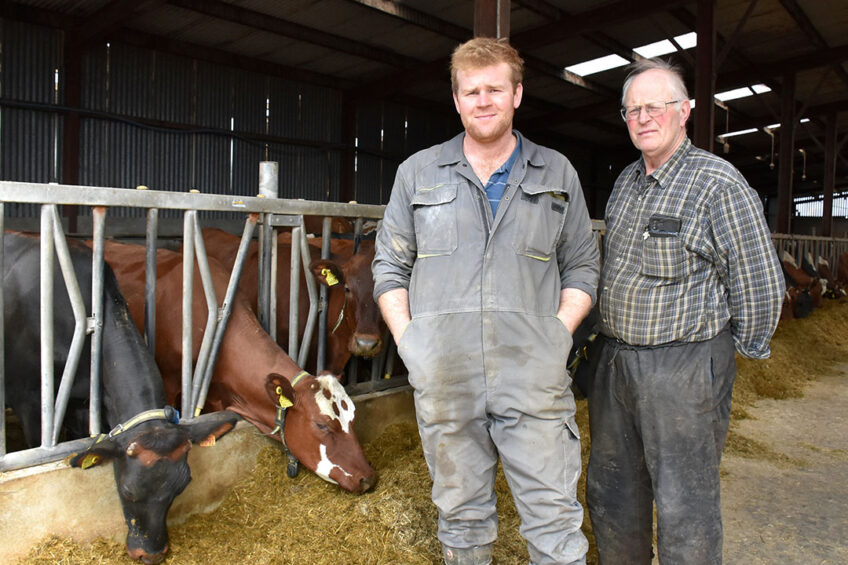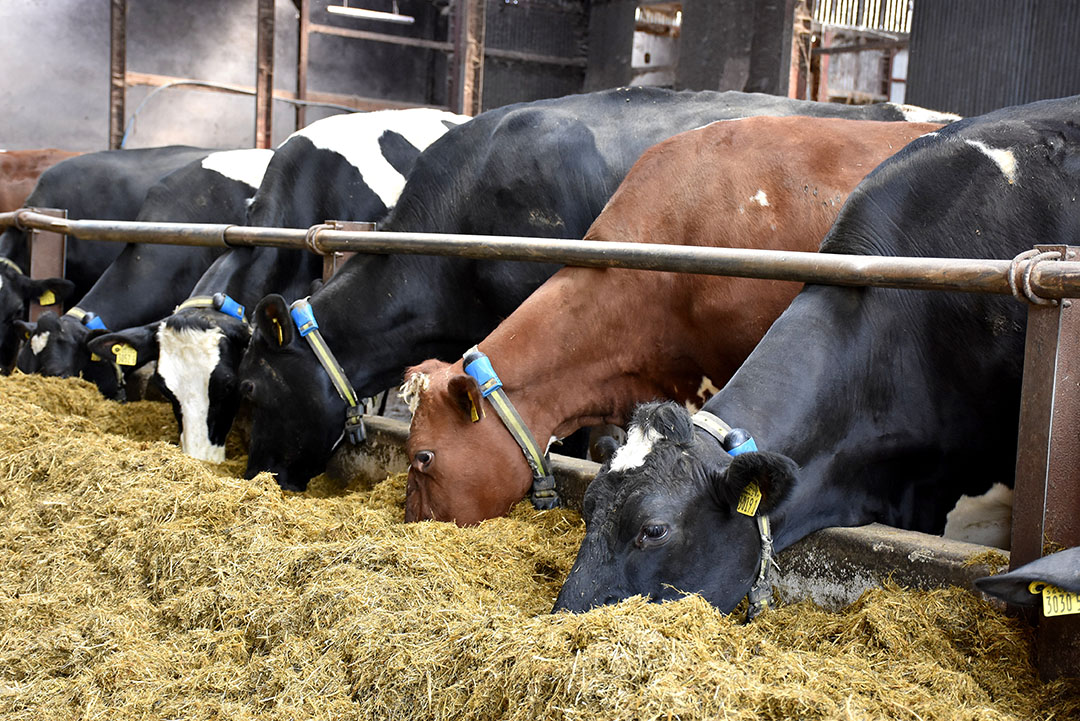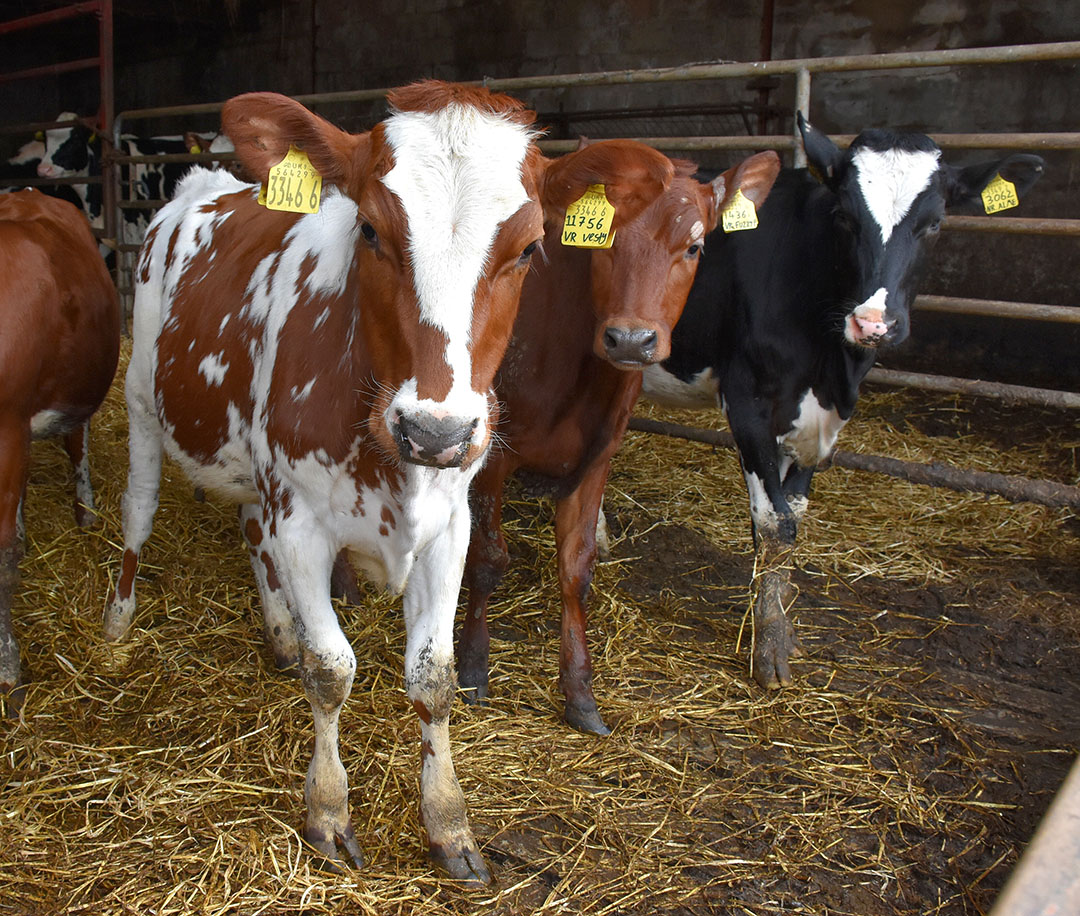N. Ireland dairy farm introduces Danish breed after bTB disaster

Building up a productive dairy herd takes years of clever breeding, skill and good management practices, but that was all lost when disaster struck and Bovine tuberculosis (bTB) entered the Kelso family dairy farm in Northern Ireland (NI).
It’s a period Mervyn Kelso and his son James will never forget, nor will want to experience again, as they lost their main milking herd of 130 cows when the dreaded disease took hold in 2022.
Incidents of bTB in Northern Ireland are at their highest levels in over 20 years. Around 22,000 herds in the country are tested for the disease every year and in 2022, 17,840 cattle tested positive and were slaughtered.
When bTB came to the Kelso farm, it wasn’t just the herd they lost – their main source of income was also wiped out.
Government legislation in Northern Ireland dictates any farm that loses a herd with bTB must have 120 days rest period before being restocked.
Danish cows
The next problem the Kelsos faced was sourcing enough replacement stock locally to get them up and running again. With milk prices at record highs, farmers were holding on to stock, and any that were sold went at crazy prices.
Mervyn states: “I’ve been milking cows here for over 30 years, building up a productive herd with excellent genetics. We lost over 130 cows and more youngstock due to bTB and then were not allowed to bring in more cows for 120 days. The big problem at that time was that milk was over 50p per litre, and nobody was selling stock. Any cows that were for sale were overpriced, so we had to look elsewhere.”

Thanks to its social media activity, the Danish breeding company VikingGenetics was well known to James, who had noticed some very healthy and productive VikingRed cows on farms in Denmark. With a need to urgently replace their herd, James and Mervyn carried out a lot of their own research on the red cows and subsequently contacted the company to see what was on offer.
The VikingRed breed is naturally healthy cows with the highest production of milk and solids for red cows, which makes them a popular breed for crossing. VikingGenetics operates its own 3-breed rotational crossbreeding system called ProCROSS using VikingRed, VikingHolstein and Coopex Montbeliarde genetics.
James adds: “Backed up with the information on the VikingRed and ProCROSS cows, we visited some local farms and some in England that use the breeds to see how they were getting on. In August, we ventured on a buying trip to Denmark, where we bought 80 in-calf heifers and cows off 12 farms, the majority being VikingRed, with some ProCROSS animals as well. We were able to choose exactly the type of animal that we wanted to suit our farm.”
The stock was pregnancy checked and health checked, and 10 days after the trip, the stock was delivered to the farm in tow trucks.
New herd and calving
With the fresh stock starting to calf within 6 weeks, the Kelsos were once again producing milk on their farm by the end of September. Operating an autumn calving system, the family are now milking 110 cows averaging 28 litres per day at 3.44% protein and 4.44% butterfat.
They are using VikingRed sexed semen on the Red cows and either Holstein or VikingRed on the ProCROSS animals. When choosing bulls, they look for good milk solids, good litres, fertility, robustness and stature.

Mervyn is the chief calf rearer on the farm, and both he and James are very pleased with the offspring to date. “These breeds are very easy calving, and we only had to assist 2 out of 80 calvings. The calves are very lively and up suckling their mothers before you know it. We had been told by other farmers that they go to bed at night and forget about calvings. I thought that was too good to be true, but we have found it to be the reality,” he said.
James alluded to the VikingRed being a smaller cow in stature, being easier to manage and one that utilises feed more efficiently. “In terms of production, our VikingReds are outperforming the Holsteins per kilogramme of liveweight, in terms of efficiency. With them being a smaller animal, they naturally would eat less and use it more efficiently.”
James added that the cows are milking well, with good milk solids, and that they are “efficient eaters and good healthy cattle”.
“From our own experience, bringing in the red cows to replace our herd has been a very rewarding and beneficial project so far. All the cattle purchased have done well for us, and we are very pleased with the outcome,” Mervyn says.
Join 13,000+ subscribers
Subscribe to our newsletter to stay updated about all the need-to-know content in the dairy sector, two times a week.










